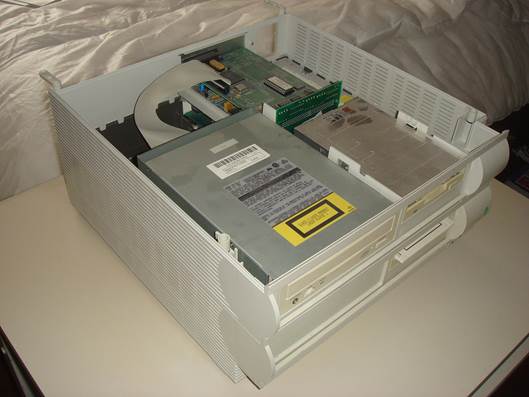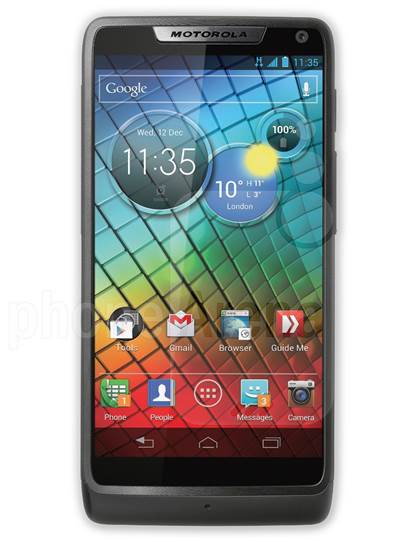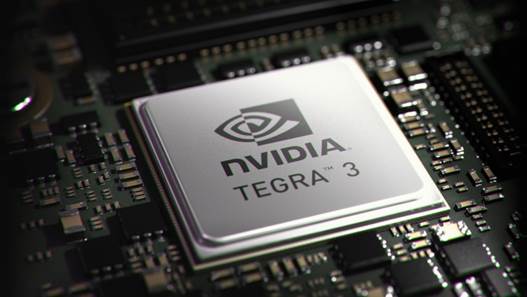We take a look at the latest battle in the
CPU market
For years, the computer industry has been
dominated by two companies: Microsoft and Intel. The former’s Windows operating
system runs on more than 80% of the world’s laptops and desktops, while the
latter’s processors account for an equal chunk of the pie. Despite attempts
from competitors including Apple’s OS X in the operating system market and
AMD’s Bulldozer architecture chips in the processor market to muscle in on the
game, the so-called ‘Wintel’ alliance has been all but unbreakable - even with
legal intervention from anti-monopoly groups worldwide.
That could all be set to change, however.
ARM, a small company based in Cambridge, whose chips have not been seen on the
desktop since 2003, is set for a comeback. And it’s planning to bring the fight
right to Intel’s doorstep, using its near-domination of the mobile market to
fund a push back where it all began.
ARM’s Origins
Today, ARM is known for powering the
overwhelming majority of tablets and smartphones on the market, but that wasn’t
always the case. The origins of the company can be traced back to Acorn
Computers, a firm set up in Cambridge in 1978 under the original name of
Cambridge Processor Unit (CPU) by Chris Curry and Hermann Hauser. The company
was formed following Curry’s departure from Clive Sinclair’s Science of
Cambridge when plans to create a home computer system were shelved in favor of
the ill-fated C5 electric vehicle project.
Working with Hauser and a group of
engineers from Cambridge University, Curry oversaw the creation of the Acorn
Atom, a powerful home computer based around the 6502 processor. Despite being
beaten to market by the cheaper but less flexible Sinclair ZX80, the Atom was a
success and its follow-up was chosen as the official machine for the BBC’s
Micro computer literacy project.
A huge success, the BBC Micro catapulted
Acorn into the big leagues, and the company floated on the Unlisted Securities
Market in 1983 with a market capitalization of $216.5 million (around $602
million corrected for inflation) after ending 1979 with revenue of just $4813.
However, missteps in America and a slump in the market that saw Acorn left with
warehouses filled with unsold Electrons, cut-down versions of the Atom designed
to compete with the Sinclair Spectrum, would spell disaster for the company,
with a winding-up order being issued just two years after its incredible
initial public offering.

RISC
PC
Investment from Italian computer firm Olivetti
would save the company and allow it to pursue a project that one of its
engineers had been working on in secret: the Acorn RISC Machine.
Wilson’s Pet
The brainchild of Acorn engineer Sophie
Wilson, the Acorn RISC Machine was a top-secret project designed to give the
company its own custom processor architecture. Where it had previously been
restricted to using third-party components, namely the 6502 processor from
Commodore-owned MOS Technology, Wilson’s creation would allow Acorn to develop
more powerful machines without having to send a chunk of the profits to one of
its own rivals.
Inspired by work carried out at the
University of California at Berkeley, known as the Berkeley RISC Project,
Wilson single-handedly created a simulated RISC processor using the BBC Basic
programming language and a more powerful dual-processor version of the
company’s BBC Microcomputer. Using the simulation as a proof of concept, Wilson
was able to get the nod from Hauser to produce a physical prototype.
The very first ARM chip was produced in
1985 by VLSI Technology, a company that already produced several components for
Acorn machines, and it worked first-time. The prototype chip was fitted to a
BBC Micro as a secondary processor and provided the power needed to quickly
design a commercially viable version: the 32-bit ARM2.
“The jump to a 64-bit architecture means an
assault on the data center”
Despite its origins from a simulation
created by a single engineer and the small team who had worked on the physical
implementation, the ARM2 was a huge success. Its clever design meant that it
could easily beat Intel’s rival 80286 processor in the performance stakes while
drawing significantly less power.
It was this low power draw that would lead
ARM inexorably into the mobile market.
The Spin-Off
A partnership with Apple Computer in the
late 1980s was considered so important to Acorn and Olivetti that a new company
was created specifically to handle the project: Advanced RISC Machines. It was
a name that would stick with the company right through until 1998, when a dual
public offering of parent company ARM Holdings on the London Stock Exchange and
NASDAQ would see it rebranded to the now-familiar ARM.

Motorola
Razr I
The work carried out by ARM for Apple would
result in the ARMv6 family of processors, starting with the ARM 610. The first
hints as to ARM’s future would come from Apple itself, which ditched its plans
to create an Apple II-like machine based around the chip, dubbed Project
Möbius, in favor of using the low-power processor in its ill-fated Newton
personal digital assistant (PDA). Acorn, meanwhile, stayed faithful to the
desktop market that had served it so well, releasing a family of RISC PC
machines based around the ARM 610.
The high performance-per-watt available from
the ARMv6 architecture didn’t go unnoticed in the industry: Digital Equipment
Corporation licensed the technology for its StrongARM processors family, an
implementation that would later be used by Intel in its high-performance XScale
mobile chips.
Although Intel would ditch the XScale
family in favor of self-designed parts based around the x86 architecture it had
worked so hard to popularize, selling the license and technology to Marvell,
and Apple’s Newton failed to be a commercial success, ARM would find its
technology in great demand.
Indeed, the Cambridge company’s off-shoot
project would prove to outlive its parent. When Acorn Computers closed its
doors in November 2000, having failed to convince the world of the benefits of
its RISC PC and RISC OS offering over Intel chips running Windows, ARM would
continue with barely a hitch.

Tegra
3
Mobile Growth
As consumers started to demand more from
their mobile phones, companies began racing around for high-performance
low-power architectures that could provide the needed performance without
sacrificing battery life. The solution was ARM.
As feature phones gave way to smartphones,
the demand for ARM’s designs grew. Rather than making the chips itself, like
Intel, the company sold intellectual property (IP) licenses that allowed
third-party customers to produce their own chips, customizing the design as
required. It was a clever tactic, sacrificing the hefty margins typical of the
industry for significantly lowered risk and it paid off.
At the start of 2011, ARM announced a
milestone: its customers had shipped more than 15 billion ARM-based processors,
a large proportion of which were destined for smartphones and tablets. It’s a
rapidly growing figure: the company’s licensees are estimated to be producing
chips at a rate of five billion a year - a three-fold increase since 2008.
The result is a market in which it is
almost unheard of for a smartphone or tablet to run a non-ARM processor.
Everything from Apple’s popular iPad and iPhone ranges to Microsoft’s latest
Surface tablets are based on ARM processors, and while some companies are
looking elsewhere (such as Motorola, which has experimented with Intel’s
x86-based Atom processor in the Razr i smartphone), they are most definitely in
the minority.